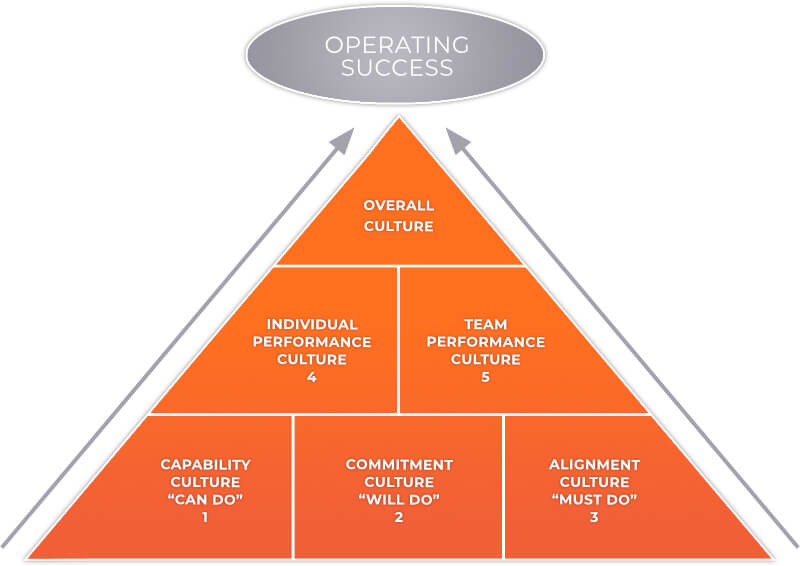Aligning Employee Performance with Company Values

Aligning Employee Performance with Company Values
SHRM defines an organization’s Values Statement as “the core principles that guide and direct the organization and its culture. It guides decision-making and establishes a standard against which actions can be assessed”. Although the behaviors and performance of executives, managers and employees may be affected by the values statement, there is no direct correlation between the two. High-performing organizations rely on their employees acting in alignment with the company values to achieve performance objectives. The values act as a compass or guidelines for all employees. It’s up to the leadership to connect the performance and expected behaviors of employees to the company’s values in a meaningful and measurable way.
Leaders must adopt principled talent management practices, and apply them in a consistent and equitable manner for all employees. These steps are essential for the employees’ behaviors and performance to align to the company’s values:
- Establish SMART (Specific, Measurable, Achievable, Realistic, Time-Bound) goals which are aligned to and instill the company values
- Develop a performance evaluation system that measures employee achievements AND also measures the behaviors demonstrated while reaching these achievements
- Follow up on the results performance evaluation by rewarding, coaching, or exiting your employees.
Leaders must integrate the organization’s core values into the setting of employee goals, evaluating performance and the effective follow through of incentives and consequences. It is impossible to achieve sustainable organizational performance without such consistent and measurable alignment.
“If you can not measure it, you can not improve it” – Lord Kelvin (William Thomas).

Identifying and Measuring the Core Values of a Company
Organizational values are guideposts to the employees on behaviors that are expected or even permissible in execution of the company’s mission and strategy. Achieve your set objectives within the values, and you should be praised and rewarded. Values can give performance meaning, so we need to define and measure adherence to them. Despite all the information available on performance management, many organizations fail to translate their values into practical application through the definition of their values.
You should ensure that your organization’s values meet a few essential criteria to avoid this mistake:
- Provide clear and immutable behavioral guidelines to support your company values statement; in order to achieve full alignment with your organizational values, employees should have a saying the creation of the values
- Leaders use these guidelines to translate organizational values into observable behaviors for employees
- Establish a rating system to make these behaviors measurable. A minimum of three rating levels should be used, such as “below expectations,” “meets expectations,” and “exceeds expectations.”
Performance Measurement Based on Company Values
Improving the performance of executives, managers, and employees through implementation of a values-based management model may seem relatively straightforward, it’s not quite that simple. Individual and organizational performance does not automatically improve if organizational values are in place.
Studies have shown that other factors influence an individual’s or organization’s performance. You can have an outstanding set of company values, but performance will suffer if these variables are not addressed:
- Capability- does the organization/individual have the skills required to be perform the work
- Alignment – has the vision, mission, and strategy been clearly communicated; roles and responsibilities understood
- Commitment– are the employees passionate and inspired to perform the work

It is for these reasons, we evaluate performance and core values separately because they are independent and must be considered as unique leadership focus areas. We can compare the impact of both variables independently. This approach can provide valuable information regarding potential areas for improvement while providing insight into how an individual performs and tell us how that individual aligns with company values.
A comparison is made between the quality of the individual’s decisions and how these decisions are aligned with the values of the organization. It allows us to gain a very accurate and relevant picture of an individual’s capabilities, commitments, and alignments.
High performance combined with high alignment is the ideal outcome of this method of evaluation. Low performance and low alignment are at the opposite end of the spectrum.
Creating a culture of high performance and alignment at your organization requires the implementation of a performance/talent management system that rewards those who deserve it and identifies those who fall short.
John Burt, Executive Leadership Coach, can provide you and your organization the expert guidance and support to ensure your performance and values align and driving sustainable operating success.
